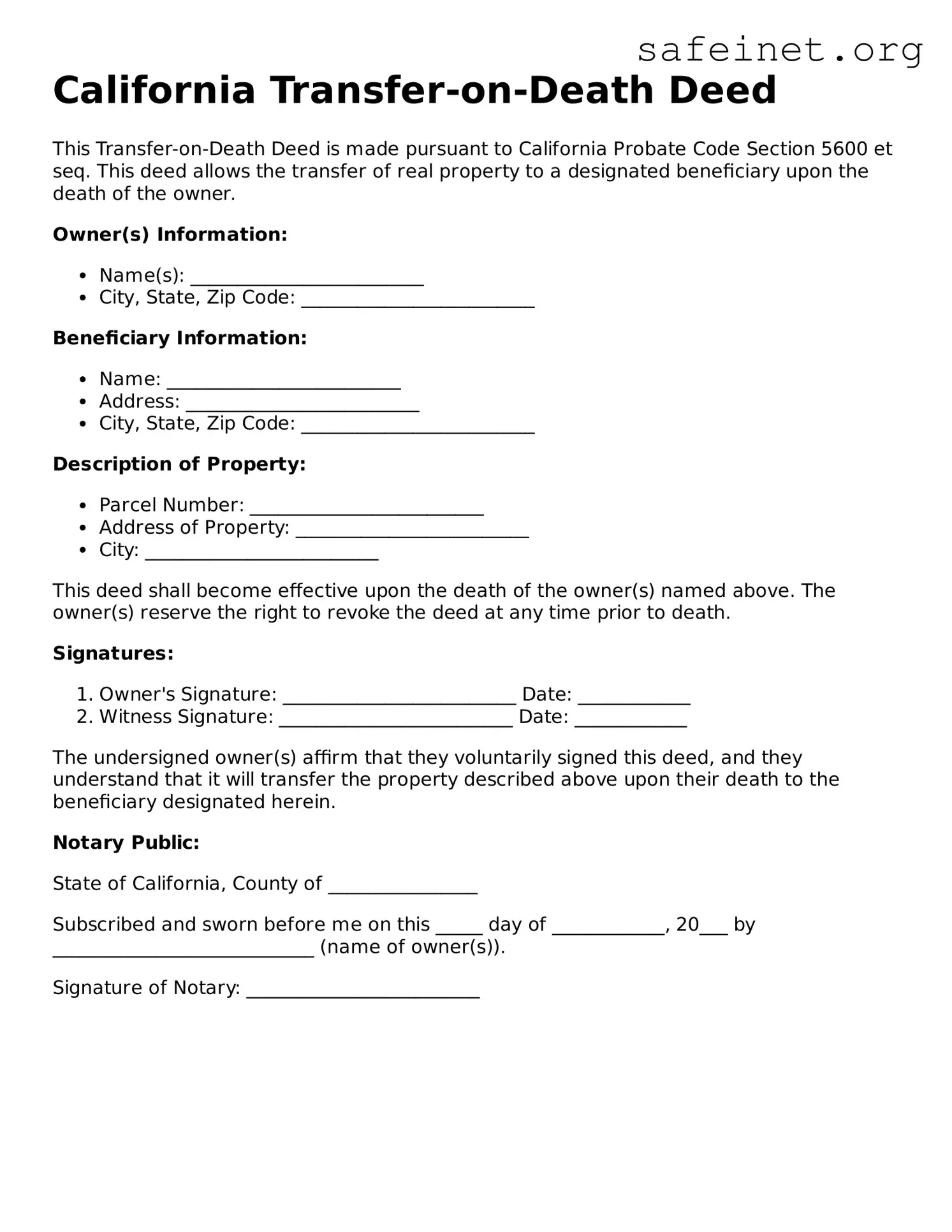What is a California Transfer-on-Death Deed?
A California Transfer-on-Death Deed allows a property owner to transfer real estate to a designated beneficiary upon their death. This deed provides an efficient way to transfer property without the need for probate, streamlining the process for heirs and ensuring that the property passes directly to the chosen beneficiary.
Who can use a Transfer-on-Death Deed in California?
Any individual who owns real property in California can utilize a Transfer-on-Death Deed. It is important to note that all owners must sign the deed if the property is co-owned. Additionally, there may be restrictions for certain types of properties or for individuals with specific legal or financial circumstances.
How does a Transfer-on-Death Deed work?
Upon the death of the property owner, the beneficiary named in the Transfer-on-Death Deed will automatically become the owner of the property. This transfer occurs without the need for probate, meaning that the beneficiary can take possession of the property more quickly and with minimal legal hurdles.
What information is required to complete the deed?
The deed must include the property owner’s name, the name of the designated beneficiary, a legal description of the property, and the signatures of all owners. Additionally, the document should state that it is a Transfer-on-Death Deed and include the date of execution.
Does a Transfer-on-Death Deed affect property taxes?
A Transfer-on-Death Deed does not trigger reassessment of property taxes upon the transfer of ownership. However, there may be implications regarding the beneficiary's property tax liability. Consulting a tax professional or an attorney for specific advice is recommended to understand potential tax consequences.
Can the property owner change or revoke the Transfer-on-Death Deed?
Yes, the property owner can revoke or change the Transfer-on-Death Deed at any time during their lifetime. This can be done by executing a new Transfer-on-Death Deed, filing a revocation notice, or by simply selling or transferring the property. It is advisable that any changes be documented properly to maintain clarity and avoid disputes later on.
Is notarization required for a Transfer-on-Death Deed?
Yes, a Transfer-on-Death Deed must be notarized to be valid. Once notarized, the deed should be recorded with the county clerk or recorder in the county where the property is located. This ensures that the beneficiary's interest in the property is officially documented and recognized.
What happens if there are multiple beneficiaries?
If a property owner names multiple beneficiaries, the deed must specify how the property will be divided upon the owner's death. Joint ownership can be established, or the grantor can designate specific shares for each beneficiary. Clear instructions in the deed can help prevent future disputes and confusion.
What are the implications of using a Transfer-on-Death Deed?
While a Transfer-on-Death Deed can simplify the transfer of property upon death, it may have implications for creditors and other claimants. Property transferred this way may still be subject to certain debts or claims against the owner's estate. Seeking legal advice can ensure a full understanding of how this deed fits within a broader estate planning strategy.
Is a Transfer-on-Death Deed the right choice for everyone?
A Transfer-on-Death Deed can be beneficial for many property owners, but it may not be the best choice for everyone. Factors such as the size of the estate, the nature of the property, and family dynamics can all influence this decision. A thorough consultation with an estate planning professional can help determine if this option aligns with both personal and financial goals.
